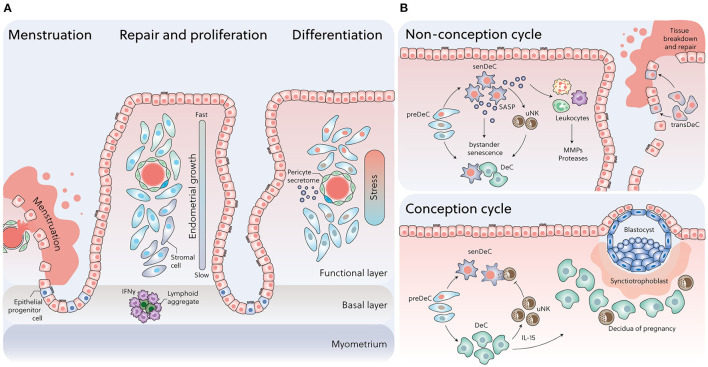Figure 1.
Dynamic changes in cell states across the menstrual cycle. (A) Following menstruation, rapid re-epithelization of the endometrium may involve mesenchymal-epithelial transition (MET), proliferation of epithelial progenitors from unshed areas, or both. Positional oestrogen-dependent proliferation, reflecting an IFN-γ gradient generated by lymphoid aggregates residing in the endometrial-myometrial junction, imposes various levels of replication stress on individual cells during the follicular phase, which in turn drives the divergence in cell states upon decidualization. (B) Upper panel: In a non-conception cycle, falling progesterone levels promote senDeC/transDeC dominance and bystander senescence via prolonged SASP secretion, resulting in leukocyte recruitment and menstrual breakdown. Lower panel: Upon successful embryo implantation, progesterone-dependent DeC cells control rapid clearance of senDeC by recruiting and activating uNK cells.

